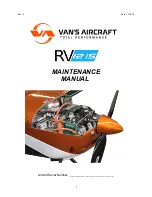
FSD International
Commander 115 TC
Pilot Operating Handbook
- 35 –
Copyright© 2008 by FSD International. All rights reserved.
For use with Microsoft Flight Simulator only. Not to be used for real-world aviation.
4.16.3 TAXIING
When taxiing, move at a safe speed using the minimum power necessary to sustain that speed
without dragging the brakes. If taxiing over gravel surfaces use the minimum engine power
necessary to avoid damage to propeller leading edges.
While taxiing, the airplane controls should be positioned to minimize any potential overturning
tendency brought on by winds or prop/jet blast from nearby aircraft. Into a headwind, use slight up
elevator to lighten the nose gear load and hold ailerons into any crosswind component. Taxiing
downwind, keep the elevator down to prevent any lifting tendency at the tail and hold the ailerons
away from any crosswind component, again to prevent any lifting of the upwind wing.
4.16.4 BEFORE TAKEOFF
WARM-UP
The engine is closely cowled to produce minimum drag in cruising flight. However, except under
the most extreme conditions, no special procedures are necessary during ground operations.
Maximum power runups are net recommended except as necessary to correct maintenance
discrepancies.
MAGNETO CHECK
Check the operation of the magnetos at 1800 RPM. When operating on a single magneto the drop
in engine speed should not exceed 175 RPM. The difference in engine speed while operating on
each single magneto should be no more than 50 RPM. If there is reason to question the magneto
check, the mixture may be leaned to peak power and the magnetos rechecked. At higher altitudes
this leaning may be required for a smooth magneto check. If doubt still remains, a magneto check
at a higher power, say 2000 to 2200 RPM, should confirm the presence or absence of a problem. If
a magneto problem is present, do not fly the airplane until the problem is corrected.
An absence of an apparent drop in engine speed during a magneto check may be an indication of
faulty grounding of one side of the ignition system and should be checked because of the hazard
this condition presents to ground personnel in the vicinity of the airplane while parked.
ALTERNATOR CHECKS
Alternator function can be verified prior to flight by noting ammeter and voltmeter indications. The
ammeter should be showing a gradually decreasing charge indication as the battery recovers from
the engine start. The voltmeter will show a nominal 28 volts if the alternator is on line or a nominal
24 volts if only the battery is functioning.
TAKEOFFS
POWER APPLICATION
Power should be checked early in the takeoff run for adequacy. Manifold pressure should be
approximately equivalent to 29 inches less 1 inch per 1000 feet above sea level. Engine speed
should be 2700 RPM.
















































